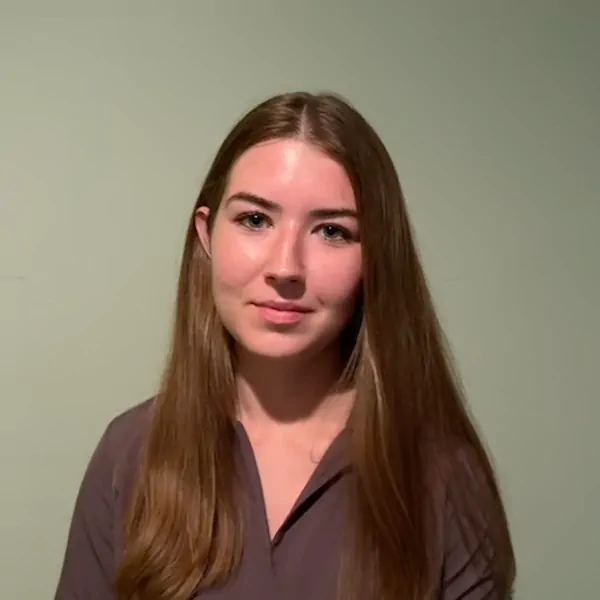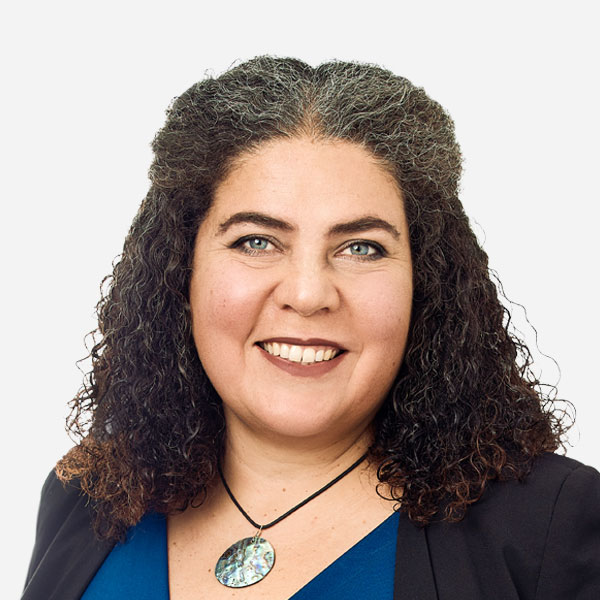This page is for RockyView candidates. To view Foothills candidates, click here
1. What is a success or something to celebrate within your division or County that you as a councillor would like to build upon?
KEVIN HANSON, Division 1
Completing the Springbank Area Structure Plan and ensuring policy is imbedded for access to the Elbow River, alongside environmental protection. Working with STAPA and championing a non-statutory public hearing be convened to discuss Range Rd 31’s potential road allowance closure.
Guiding the new EVRC staff organization in setting up close working relationships with County Staff. Advocating for Active Transportation Network (pathway) connectivity between Highway 8 communities, Springbank and Calgary. Attending many areas’ Home Owner Association AGMs for updates and Q&A.
Requesting a re-think of the whole Bragg Creek Area Structure Plan, not just expansion lands. Advocating for a Visioning Committee as a new first step of our ASP process to help build stakeholder consensus. Working closely with local groups to build a more unified community voice with Council and Administration. Firesmart Committee reboot.
MARK KAMACHI, Division 1
Continued collaboration and communication between Rocky View County, Calgary and the Government of Alberta for transportation and road projects in Elbow Valley and Bragg Creek which have improved transportation for our community. I would focus on building the relationship between Rocky View County (RVC) and the Tsuut’ina Nation, which benefits each community. With Tsuut’ina Nation’s spanning the entirety of Division 1 south of Highway 8 and bordering Bragg Creek to the east, it makes sense to develop strong and respectful relations.Next, establishing an emergency egress/access route along with continuing FireSmart initiatives would ensure residents of Bragg Creek and area have a secure and efficient way to evacuate or access essential services in times of emergency. Streamlining development processes locally and throughout RVC for homeowners and developers is key. Supporting reasonable and sensible development that focus on providing options for seniors to stay in their community and for young families or potential workers for local businesses to be able to live here is important for a healthy community in Division 1.
BEV COPITHORNE, Division 2
I’d like to build on the recreation in Springbank. While the current council recognized the need for more recreation facilities, I am not convinced that the choices address the true needs of our community. Since this approval is conditional, I would like to ensure that what actually goes forward is what is best for the community. The last time broad-based, meaningful engagement happened was in 2017 and it is imperative that the County update this before moving forward. A new community center is overdue, but the major questions I have is the need to build two separate facilities and the long term costs of both of those facilities. It is not fiscally responsible to approve spending $26 million on two separate facilities before ensuring that these accurately reflect our community’s recreation needs.
DON KOCHAN, Division 2
- Updated Springbank Area Structure Plan to support rural lifestyle, parcels no less than 2 acres.
- Design initiation of the Springbank Community Event Centre and addition of a recreational facility at SPFAS.
- Updated the Agricultural Master Plan to recognize the need to preserve agricultural lands for farming and ranching.
- Established an Aggregate Resource Plan that provides for better performance standards and monitoring of onsite operations.
- Approved a zero percent municipal tax increase over the last couple of years while maintaining or enhancing county services.
2. What are the top concerns you hear from residents in your division? Of these concerns, what do you see as the top 2 priorities you would represent?
KEVIN HANSON, Division 1
Division 1 is very diverse. It includes a Growth Hamlet, traditional Country Residential, newer Cluster Developments, mixed Ranching/Farming. Priorities for each area vary widely. Concerns include: Highway 8 construction. Fire Protection via hydrants. Wildland fire risk. Secondary Egress for West-Bragg, Gateway development delays, Bragg Creek ASP completion, Wildlife protections, Environmental Asset Protection, River Access, Hamlet Infrastructure challenges, Tourism challenges, Solid Waste and Garbage, County Service Levels. My priorities are closely aligned with setting priority for local needs and wants. It is a balancing act and focusing on only 2 priorities will allow too many balls to drop for too many other residents of Division 1. That said, a single top priority is advocating Division 1 amongst my Colleagues on the newly elected Council, and continue to build a strong reputation for our diverse communities.
MARK KAMACHI, Division 1
One of the top concerns is about the need for an emergency egress/access route in the Bragg Creek area should we ever have a wildfire. This is not a matter of “when” but of “how” as we have seen wildfires in neighbouring Alberta communities. Wildfire mitigation is crucial as it directly impacts the safety and security of our homes and natural environment throughout all of RVC.
Next, there is a strong call to make the development process more efficient for homeowners and businesses, which would facilitate local growth and economic contribution. There isn’t a week that goes by where a local resident or business owner doesn’t mention how dealing with RVC is an exercise in frustration. Our negative reputation around sensible development continues to limit RVC and this must be addressed.
My top two priorities to focus on for Division 1 would be fire mitigation in conjunction with developing an emergency escape route should we encounter a wildfire situation in the Bragg Creek area. None now exists, and since our neighbours, Tsuut’ina Nation and Foothills County, share the same threat, this critical piece of infrastructure is essential to each community. Be it a road, secondary bridge access, or combination of the two, providing a safe escape is essential for all residents and visitors, while providing firefighters effective access to fight the fire. One bridge as it stands cannot do both.
Also, development process for both residents and commercial business investors alike needs to be further streamlined for efficiency. Whether it be to build a tourist destination, a recreational facility, school, river crossing/pathway, or to add a deck or build a cottage home, sensible development benefits all. Having a streamlined, transparent process lets us move forward and keep up to the demands of locals, those who visit, and potentially those who want to make RVC their home.
BEV COPITHORNE, Division 2
Most residents are concerned about development and ensuring that it doesn’t negatively impact our local rural communities. They also want to ensure tax dollars are spent responsibly and more specifically on recreation. They are expressing frustration about how the county addresses fire services given the rural nature of our communities, dealing with traffic congestion and safety, and how we protect agricultural land and operations. While I’m committed to addressing all of these, my top two priorities are ensuring sustainable development and fiscal responsibility. Development must support its own growth and cover the costs of the systems it puts pressures on whether that’s roads or water and wastewater handling.
DON KOCHAN, Division 2
- Pressures of growth and how it is managed.
- Need for a sustainable approach to public utilities, including how water systems are supported.
- Need for more community event space, regional pathways and interchange updates.
Top Two Priorities
- Growth. Ensure development advances in a logical manner while protecting the rural lifestyle. Ensure proper infrastructure (utilities, transportation, etc.) is in place as development occurs.
- Community. Collaborate with our surrounding municipalities to ensure RVC’s growth standards are met. Develop a utility business model so we have the expertise to run the present public systems and allow for incorporating water coops that no longer wish to take on that huge responsibility. Update the recreation master plan and deliver the Springbank Community Event Centre and SPFAS expansion.
3. If you’re not elected, how will you continue to advocate for your community and division?
KEVIN HANSON, Division 1
If I am not re-elected, I will seek out County and community committee and board leadership opportunities that are at a more boots-on-the-ground level compared to the over-arching governance role being a Councillor entails. Having grown up hiking and scrambling in the mountains west of Calgary I have always had Bragg Creek in my backyard. This past 4 years I have very much enjoyed helping Bragg Creek continue to recover from the flooding, and set a new course – with one eye on the past and one eye on the future with its new ASP underway. Despite a bit of distance, I would look for volunteer opportunities in the community since I know and understand it better now than before this term on Council.
MARK KAMACHI, Division 1
Passion for people and community drive me. If I’m not elected, that passion will remain the same. My wife and I will go on working together as creative partners with AdMaki. We will continue our longstanding tradition of supporting our community through sharing our professional knowledge, time, and resources with groups such as the Bragg Creek Foundation, Bragg Creek & Redwood Meadows Wellness Network, Bragg Creek Snowbird’s Fellowship, Taste of Bragg Creek, Hockey For Horizon, just to name a few.
We are deeply committed to the well-being and growth of Division 1 made up of the Bragg Creek area, Springbank and Elbow Valley. We will stay engaged by participating and volunteering in local events, joining community groups, and offer our expertise where needed. Additionally, we plan to continue collaborating with local organizations to address key issues and facilitate positive change. Our advocacy for our community will remain steadfast, regardless of the election outcome.
BEV COPITHORNE, Division 2
It is my greatest hope that Division 2 residents will make this question irrelevant by electing me to ensure that their views and concerns are effectively represented. I have been a long-term advocate for my community, and my commitment to that will not change should I not be elected. I will continue to serve my immediate community on the Jumping Pound Hall Board as well as my more regional neighbours on Rural Crime Watch, and on Rocky View County’s Family and Community Support Services (FCSS) Board and Subdivision and Development Appeal Board (SDAB).
DON KOCHAN, Division 2
I have extensive experience on the Assessment Review Board and Subdivision Development and Appeal Board. I would continue to serve in these areas. As well, if there are community engagements required for Division 2 issues I would attend and offer my expertise.
4. Why do you believe you are the best candidate to represent your division? What qualities, skills, and past experience do you bring to the role of Councillor?
KEVIN HANSON, Division 1
Rocky View County continues to grow and mature. We are home to 45,000 residents. We are currently Alberta’s 5th biggest municipality, tax assessment-wise, thanks to our high-value residential properties, but also a very prosperous commercial and industrial base. Thanks to our proximity to Calgary this growth has happened very quickly, and our Administrative skills have had to adapt just as quickly. Governing this municipality, Council also has to have the skills to navigate the environment we are finding ourselves in. If Council does not have the experience and competency to govern at the “board level”, then Administration and land developers will fill that vacuum and default to running the County with minimal real elected oversight. I believe Council needs to be able to drive the direction of the County strategically, set high level priorities like Service Delivery, Asset Management, Economic Development, Agricultural Production, overall Fiscal Responsibility; and hold administration to deliver in a Transparent and Accountable manner. My technical and business experience and qualifications, my ability to deeply understand complex issues and synthesize solutions involving many points of view or potential angles will continue to be brought to the table. I believe my past 8 years on RVC Council shows I will continue to bring this high level of competency as representation for Division 1.
MARK KAMACHI, Division 1
I am the best candidate to represent our division because my roots run deep here, and my commitment to this community is personal and heartfelt. My active participation, along with my wife and business partner, in local events from escorting guests at Taste of Bragg Creek to being on stage with Swamp Donkey Musical Theatre, showcases my dedication to enriching the community’s cultural landscape. I’ve also been involved in the local music scene with Skuzzy & the Woodticks, (the hottest cover band in all of Bragg Creek, though I may be a little biased). These experiences reflect how much I value connection, culture, and community spirit. I am passionate about representing you to bring our shared energy, creativity, and resilience to Council, to listen with respect, and work hard to ensure all of Division 1 is heard and valued.
I bring a diverse range of qualities, skills, and experiences to the role of councillor. I am approachable and love meeting new people. I want to make it easy for residents to share their concerns. Transparency and accessibility are my commitments, and I will always seek the truth.
My term as an RVC councillor from 2017-2021 provided me with deep insights into municipal and provincial governance, enhancing my understanding of our residents’ and commercial investor needs and how to navigate differing perspectives. Building relationships with vested parties in any given matter is paramount to moving forward.
As a business owner I grasp both economic challenges and opportunities, while my extensive volunteer work, such as engaging with young creative minds at Springbank High School on Career Day, picking up garbage at Clean Up the Creek Day, or donating Branding/Logos to Jumping Pound Hall and Springbank Community Association, underscores my dedication to our community.
My role as creative director for AdMaki, sessional instructor for 10 years at ACAD/AUA, and mentor to Indigenous business leaders showcases some of my leadership and problem-solving skills. But above all, my experiences as a father and husband have taught me patience and understanding. The role of councillor requires wearing many hats, and I wear many.
BEV COPITHORNE, Division 2
I have lived in the division most of my life and I bring renewed energy and fresh perspectives to the issues that this division faces. My family has been stewards of the land for over 140 years, that deep connection and understanding of this place is unmatched. It gives me a unique understanding of local needs, traditions, and changes over time. This combines with my decades of experience in education, non-profits, and local board service to make me uniquely qualified to serve as councillor for Division 2. As a fourth-generation resident and active community leader, I understand the land, the people, and the importance of preserving our rural character while supporting responsible, balanced growth. As an educator, I listen to a variety of perspectives with an open mind and build collaborative relationships. These are two of a councillor’s most important roles as decisions are made as a group, not by an individual. My work on boards like FCSS and the SDAB as well as my participation in numerous public hearings and meetings at the county has already shown my commitment to transparency, fairness, and getting results. I understand both community needs and governance/planning. This gives me insight and experience in addressing the complex challenges that Rocky View County faces, while never forgetting what matters most – protecting this special place we all call home.
DON KOCHAN, Division 2
I am the best candidate because of my experience, leadership, proven results, and a clear vision for how Rocky View County can tackle its most pressing issues. My leadership and administrative experience are matched by a strong commitment to transparency, accountability, and residents’ interests.
I focus on smart, sustainable growth and infrastructure, maintain strong relationships with stakeholders and neighboring municipalities, and bring a thorough understanding of municipal governance. Most importantly, I combine vision with practicality to deliver real results for residents.
I bring over 40 years of experience in the field of municipal government services. I have held many administrative roles as well as different roles on Council.
I have been exposed to and successfully dealt with many of the issues that are facing RVC and feel I can contribute to successful decisions moving forward.
5. How do you deal with the complexity of contentious issues?
MARK KAMACHI, Division 1
I use a balanced and thoughtful approach and prioritize open communication and active listening to ensure all perspectives are considered.
I strive for transparency and informed decision-making, aiming to find solutions that serve the best interests of all parties involved. I am rarely the expert on a specific issue, but I am the guy who will stick up his hand and ask the question everyone else is afraid to ask.
For example, take gravel pit dust. I would work with experts in geology, environmental or engineering to understand impacts along with community concerns. In managing wastewater treatment concerns, again, I’d engage experts and stakeholders to develop sustainable and effective solutions. Decisions need to be based on scientific research in order to move forward effectively.
I would gather all concerned and try to bring relevant parties together early. Engage those who are most concerned and at the same time get the experts involved. As in my profession, research is critical in order to come up with the best solutions. I learned early in my last stint as a councillor, those who think they know it all, know little.
One last point to make is that dialogue, and keeping lines of respectful communications open, rather than combative communication, is key to resolution. You can’t please all folks but at some point, a resolution can be found that the majority benefits from.
DON KOCHAN, Division 2
Through my years of experience, I have undertaken many complex issues and resolved them successfully such as the development of a Utility Business model for the Town of Canmore. I worked with the residents and Council on the approval of a model that remains in place today and has saved millions of taxpayer dollars.
Development pressures is another contentious issue of which careful analysis is required and considering the input of the community.
6. How would you approach municipal issues that overlap into other municipal, provincial, and federal jurisdictions?
MARK KAMACHI, Division 1
Collaboration and clear communication from all vested parties is key here. The pros and cons of any project must be weighed carefully by stakeholders including residents, visitors, businesses, neighbouring communities, RVC administration, and provincial and federal representatives. It all comes down to the issue at hand and who should be at the table. Building strong working relationships from the beginning with stakeholders is crucial for a positive outcome.
This was the case when traffic lights were installed at the junction of Highway 22 and Highway 578 (White Avenue). Over many meetings, open houses, community forums, and traffic flow research and design, it was determined that a problem existed, and a solution was implemented. To this day the intersection, although a temporary solution, has had a very positive impact for both residents, businesses and visitors.
By fostering partnerships and advocating for our community’s interests as well as those affected, we can navigate these complex issues more effectively. It comes down to communicating with each other in a respectful manner that will prove beneficial for all.
DON KOCHAN, Division 2
While on the CMRB board I participated in determining that regional planning was not effective therefore the 8 municipality members have returned to the Intermunicipal Development Plan process for more effective planning decisions.
I plan on taking an active role in the updating of 8 Intermunicipal Development Agreements (IDP) that will regulate the development compatibility between municipalities. I am presently on the Joint Planning Area development committee for strategizing development needs between Calgary and Airdrie.
As well, I will ensure that Master Servicing Agreements on the sharing of services such as fire, recreation, utilities, policing, etc. are updated on an ongoing basis as required.
7. How do you see balanced growth and development with preserving rural character and addressing resident concerns?
MARK KAMACHI, Division 1
For me, achieving balanced growth while preserving rural character involves careful planning and community engagement. I envision development that respects the unique qualities of our agricultural/rural areas with its forests, farmland, parks, recreational amenities, while integrating new infrastructure in harmony with the existing landscape. For example, the Bragg Creek Hamlet is one such area that is following a community driven Area Structure Plan which is critical to maintain growth/development in a sustainable manner. It should complement the natural environment.
This means prioritizing projects that align with community values and address resident concerns. Regular consultations with residents, commercial businesses, community groups, etc. ensures voices are heard and incorporated into planning decisions. Sustainable practices and smart zoning can guide growth without compromising our lifestyle. This allows us to foster local businesses and support agriculture which can strengthen our economy. Afterall, we want to preserve our rural roots while at the same time grow sensibly. If you don’t grow, you stagnate.
DON KOCHAN, Division 2
I have championed the recently approved Springbank ASP. It has outlined future land uses for the area. The ASP provides strong policies on protecting the rural lifestyle for the community such as the provision of parcel sizes not being smaller than 2-acre parcels. Commercial parcel development will be gauged according to needs identified to serve the community.
8. If you were to expand on question 2a, what else would you like to represent specific to your division and how would you do that?
MARK KAMACHI, Division 1
To speak further to specific concerns in Division 1, I would address the importance of building strong ties with our Tsuut’ina Nation neighbours. We share common borders, road infrastructure, natural landscapes and more. Unilateral growth or development can affect each other’s jurisdictions in both positive and negative ways. Therefore, working in cooperation would be the best solution to offset any duplication of services, infrastructure or community needs that benefit our residents. We have seen what has been happening with projects on the Calgary-Tsuut’ina Nation border and similar consideration should occur on the border between RVC and Tsuut’ina.
DON KOCHAN, Division 2
My plan is based on three pillars:
Building Community – I will deliver the Springbank Community Event Centre and Springbank Park for All Seasons (SPFAS) expansion. I will update the Recreation Master Plan to include Harmony’s recreation needs. I will require the development of a concept plan for the newly identified Springbank community core to ensure proper placement of community and institutional needs are synchronized.
Connecting Community – I plan on continued community engagement to understand resident priorities and to deliver accountable budgets and deliver on county service expectations. I plan to continue to focus on initiatives to build regional pathways. In terms of transportation, interchange upgrades are necessary and I will ensure we update the Springbank Transportation Master plan.
Smarter Growth & Partnerships – We need growth that protects our rural way of life. I will manage that growth and pursue a regional utility approach to lower costs and provide a longer term sustainable plan for water servicing. I will update the Inter-Municipal Development Plans. I will also implement the County Plan (MDP), Agriculture Master Plan & Aggregate Resource Plan.
9. How will you ensure rural infrastructure and services—especially water access, quality, and wastewater systems—meet provincial standards amid population and development growth as well as climate pressures?
MARK KAMACHI, Division 1
For me, ensuring that rural infrastructure and services in Rocky View County meet provincial standards amidst growth and climate challenges is key. It requires a proactive and strategic approach.
I would continue to advocate for regular assessments of our water access, quality, and wastewater systems to identify areas needing upgrades due to development and population growth. From my previous years on council, this is ongoing and a requirement of any jurisdiction that provides water service infrastructure for both residential and commercial consumers.
Collaborating with provincial agencies will help align our efforts with standards and secure necessary funding due to the costs associated with growth. Emphasizing sustainable practices, such as water conservation and innovative waste treatment technologies, can address both growth and environmental pressures. Engaging with experts and residents will ensure diverse input and community buy-in are not overlooked.
By prioritizing infrastructure investments and leveraging partnerships with service providers and neighbouring jurisdictions, we can build resilient systems that support our growing population while safeguarding our natural resources.
DON KOCHAN, Division 2
I have been advocating for a Utility Business Model to be developed whereby we have the proper expertise to run the utilities as a business. This expertise will ensure that environmental standards are adhered to and provided at a competitive rate. Presently the taxpayer at large is subsidizing the public utility by approximately 3 million dollars. I have succeeded in having a motion passed that the utilities must be totally user fee cost recoverable by 2027 thereby eliminating the taxpayer subsidy. By having a utility model in place that opens the door for water coops to tie in their systems if they so wished.
10. How will you ensure the costs of residential and commercial development (e.g., infrastructure, servicing, maintenance) are fairly recovered? What is your stance on using debt or privatization to manage these costs?
MARK KAMACHI, Division 1
To ensure the costs of residential and commercial development in Rocky View County are recovered fairly, I would advocate for a balanced approach involving transparent cost assessments and equitable developer contributions. Ideally, it should be a win-win project for both the developer and residents of RVC.
Implementing development levies and fees ensures that those benefiting from new developments contribute to the infrastructure, servicing, and maintenance costs. This approach helps distribute financial responsibilities fairly and sustainably without putting a burden on taxpayers.
Regarding the use of debt or privatization, I believe in prudent financial management. While debt can be a tool for essential projects, it should be used very sparingly and responsibly, ensuring that repayment plans are structured to avoid burdening future generations or deter future growth.
Privatization, on the other hand, can be considered for specific services where it can lead to greater efficiency and cost savings, but it should not compromise public interests or lead to increased costs for residents. The ability to work with and within budgets is crucial to sustained growth into the future. This is where building strong relationships with those willing to invest in RVC have to be created and maintained.
DON KOCHAN, Division 2
We have introduced new and updated off-site levy fees that are collected to ensure that when utility or transportation infrastructure is required funds will be available. Developers must be accountable for infrastructure needed to support their projects.
11. How will you maintain transparent and responsible fiscal management while balancing infrastructure needs, emergency preparedness, and long-term sustainability? How will you ensure accountability in public-private partnerships or outsourced services?
MARK KAMACHI, Division 1
I would implement a multi-faceted approach.
First, I would set clear targets and prioritize regular communication with residents and stakeholders providing updates on fiscal decisions and their impacts. Utilizing budgetary tools and performance metrics will help track spending efficiency and allocate resources wisely. I would ensure that finance and budget experts would be consulted to ensure all decisions are well reviewed.
As for infrastructure needs, RVC must prioritize projects that align with long-term sustainability goals, ensuring they are cost-effective, environmentally friendly and built with the future in mind.
As for emergency preparedness, specifically in the case of wildfire threats, RVC should include investments in up-to-date systems and training, balancing immediate needs with future resilience. When it comes to the wildfire risk in an area such as Bragg Creek, it’s a matter of “when” not “if”.
Finally, regarding public-private partnerships or outsourced services, similar to how my wife and I manage our business, I would ensure accountability through robust contracts with clear performance indicators and regular audits. Engaging third-party evaluations can provide unbiased assessments of service delivery especially when we are dealing with taxpayer dollars.
DON KOCHAN, Division 2
The different master plans that are developed for transportation, utilities, recreation etc., are always available for community review and input. These plans will also identify the fiscal needs for the plan and long-range budgeting requirements. For emergency preparedness RVC is in an enviable position where we have approximately 75 million in a tax stabilization reserve.
Accountability of a public-private partnership is done with a well-structured contractual agreement. The Town of Canmore, during my tenure, maintained such an agreement for over 30 years and it is working very well.
12. With the disbanding of the Calgary Metropolitan Region Board and the implementation of Bill 20 by the Alberta government, how will you protect your municipality’s autonomy in planning decisions?
MARK KAMACHI, Division 1
My approach to protecting RVC from provincial overreach would involve fostering strong community engagement and ensuring that local voices remain at the forefront of decision-making. I would advocate for clear and consistent dialogue with provincial authorities to express our community’s unique needs. I would keep the pulse of community priorities by having public forums and open houses to listen to stakeholders.
Building coalitions with neighboring municipalities can help strengthen our collective voice. Also, by collaborating with our neighbours, we can present a united front on regional planning issues, ensuring that local perspectives are considered in provincial decisions.
Additionally, leveraging local expertise and conducting thorough impact assessments will help us make informed decisions that reflect our community values.
DON KOCHAN, Division 2
I was involved in the dissolving of the CMRB. It is a positive change so that more effective planning may take place relative to the respective municipalities affected.
The disbandment of the CMRB now necessitates municipalities to update their Intermunicipal Development Agreements, which I will be very involved with. These agreements will outline the role the municipalities will provide as development requests along their borders come forward.
ROCKY VIEW DIVISION 1 CANDIDATE INFORMATION


ROCKY VIEW DIVISION 2 CANDIDATE INFORMATION
DAVID CLARK
Division 2
No further information has been provided to the High Country News



























